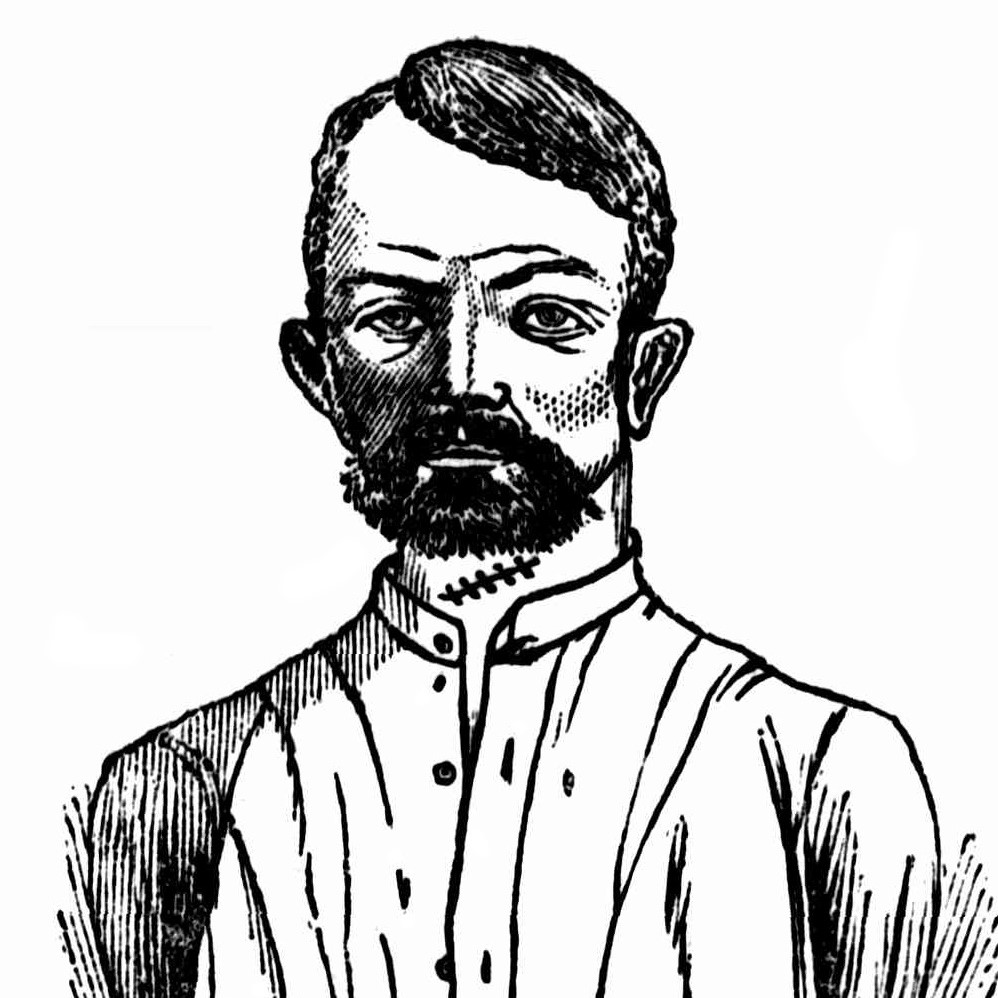
d: 1890
Albert Smidt
Summary
Name:
Years Active:
1888 - 1890Status:
ExecutedClass:
Serial KillerVictims:
2+Method:
Bludgeoning / Throat slitting / DecapitationDeath:
November 18, 1890Nationality:
Germany
d: 1890
Albert Smidt
Summary: Serial Killer
Name:
Albert SmidtStatus:
ExecutedVictims:
2+Method:
Bludgeoning / Throat slitting / DecapitationNationality:
GermanyDeath:
November 18, 1890Years Active:
1888 - 1890bio
Albert Smidt was born around 1847 in Potsdam, Prussia, Germany. Little is known about his early upbringing, but contemporary reports suggested he had received a decent education and strong religious instruction in his youth. Reverend John MacIntyre of Wagga Wagga, who spent considerable time with him after his arrest, described him as “a fairly educated and intelligent man” with clear signs of earlier Christian teaching.
Smidt immigrated to Australia around 1881 or 1882. In a police statement made in May 1890, he said he had first arrived in Queensland, while other reports suggested he may have landed in Victoria after a period in New Zealand. His movements in those years were erratic, as he lived the life of an itinerant worker—prospecting, mining, and occasionally farming. He was known to wander across the New South Wales goldfields, frequently returning with money after disappearing for weeks at a time.
By the late 1880s, Smidt was working in rural New South Wales as both a prospector and fisherman. Witnesses placed him along the Murrumbidgee River near Gundagai, where he may have been fishing or possibly scouting for other opportunities. Some police speculated he had been in the Gundagai region as early as 1881 or 1882. From about 1888, Smidt was based in the rugged Wee Jasper district at the foot of the Brindabella Ranges, an isolated region he seemed to know well.
Physically, Smidt was described as a man of medium height (about 5 ft. 4 in.), stocky, and of fair but sunburnt complexion. His face carried a sullen expression, framed by grey eyes, a small moustache, and a pointed “goatee” beard.
murder story
On 17 October 1888, a gruesome discovery was made at “Gellingroe” station near Gundagai: the headless, naked body of a young man was found snagged on a log in the Murrumbidgee River. The man was under 30, muscular, and appeared to have been killed violently before being decapitated. Despite investigation, no identity or suspect could be confirmed. When Smidt was later arrested for murder in 1890, speculation grew that he may have been the culprit, since he had a history of decapitating his victims. However, no direct evidence ever tied him to the crime, and it remained officially unsolved.
Smidt became closely associated with two Victorian miners, John Young Taylor and Jacob Rick, in late 1889. The three men, along with a fourth, Tubbenhaur, travelled from Peak Hill in central New South Wales toward the southern diggings. By December 1889, Smidt and Rick were travelling alone together.
On 1 January 1890, they were last seen prospecting at Garner’s paddock near Tumorrama. Later that day, Smidt appeared without Rick, behaving nervously and offering contradictory explanations of his companion’s absence. Over the following weeks, he tried to sell off their shared wagonette and possessions. Suspicion later fell on Smidt after Rick never resurfaced, and investigators found Rick’s watch in Smidt’s possession. Although police believed Smidt murdered Rick that same afternoon, Rick’s body was never found, and charges were never formally laid.
Smidt returned to Victoria in early 1890 and reconnected with his former companion, John Young Taylor, a 60-year-old Scottish-born prospector from Rushworth. Smidt convinced Taylor to join him on a prospecting trip to Tumbarumba and Wagga Wagga, persuading him with promises of lucrative diggings.
On 7 April 1890, the two men were last seen together drinking in several hotels along the Tarcutta Road near Wagga. Witnesses noted Taylor was heavily intoxicated, while Smidt remained sober. Later that day, blood was found on the road near Alfredtown, and Smidt was seen driving Taylor’s wagonette alone.
Over the next two days, Smidt attempted to dispose of evidence. He purchased a spade, camped near Old Junee, and buried Taylor’s decapitated body and severed head in separate shallow graves. His efforts to burn clothing and clean the blood from the wagon were noticed by locals.
On 9 April 1890, Senior-Constable Henry Dixon arrested Smidt near Old Junee while he was still in possession of Taylor’s horses and wagonette. During transport, Smidt attempted suicide multiple times—first slashing his throat with a razor and knife, and later firing a revolver into his own mouth. Both attempts failed, and he was taken under guard to Wagga Hospital.
Within days of Smidt’s arrest, police located Taylor’s remains. On 11 April, Dixon uncovered Taylor’s severed head buried beside Houlaghan’s Creek near Old Junee. The following day, his body was discovered nearby. Post-mortem analysis showed Taylor had suffered tomahawk blows to the head and died from slow bleeding after his throat was cut. Smidt later confessed that he decapitated Taylor to prevent identification.
Smidt was formally charged with Taylor’s murder and brought before the Wagga Circuit Court in September 1890. Despite attempts by his counsel to argue for manslaughter, the jury took only twenty minutes to convict him of wilful murder. Justice Charles Innes sentenced him to death, calling the crime “cold-blooded” and “atrocious.”
After a brief incarceration in Wagga Gaol, Smidt was executed by hanging on 18 November 1890. Reports stated his death was instantaneous. He was buried in unconsecrated ground at Wagga Wagga Cemetery.